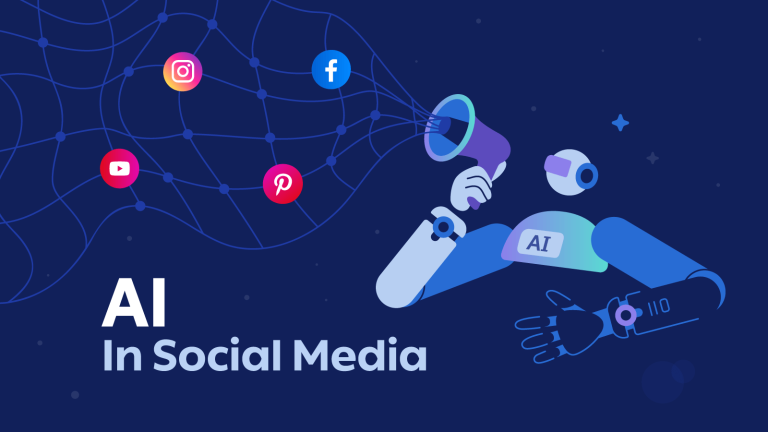Humanizing Recruitment: The Art and Science of Strategic Branding in HR
In the dynamic landscape of Human Resources (HR), where talent acquisition is not just a process but a strategic imperative, the role of branding has taken centre stage. Gone are the days when recruitment was solely about posting job openings and reviewing resumes. In recent times, leveraging HR has become a detrimental point, and unifying the art and science of strategic branding has become a key focus.
The Evolution of Recruitment
Recruitment has transformed from a transactional process to a candidate-centric experience. It is not just about finding the person with the right skill, rather it has become more of a task to find the right person who not only is skillful rather is proficient in other areas of expertise as well including communication and people skills. This shift has revolutionized the importance of strategic branding in HR to new heights.
The Art of Branding in HR
1. Leveraging a Compelling Employer Value Proposition (EVP)
The heart of strategic branding lies in a compelling Employer Value Proposition (EVP). It’s the unique set of offerings and experiences that an organization provides to its employees. Nowadays employees look for companies that complement their growth so they have a better chance of excelling in their careers. Crafting an EVP that resonates with the target talent pool is an art that involves understanding the aspirations, values, and expectations of potential candidates.
TikTok: A Dance with Global Success
In this case study about TikTok [1], the Chinese social media app developed by ByteDance, has rapidly captivated a predominantly young user base since its 2016 launch, later merging with Musical.ly in 2018. Fueled by a unique algorithm offering personalized 15-second videos and a customized “For You Page,” TikTok strategically targets the youth demographic through music and dance-centric content, influencer collaborations, and global adaptability. This has been possible by making use of the art of strategy in this regard.
2. Designing an Inviting Candidate Experience
In the era of digitalization, a candidate’s first interaction with a company often happens online. It is a detrimental task for HRs now to ensure a seamless process for the candidates during recruitment. From user-friendly career portals to personalized communication, the design of every touchpoint contributes to building a brand that candidates want to be associated with. 83% of candidates say a negative interview experience can change their mind about a role or company they once liked.
The Science of Branding in HR
1. Leveraging Data Analytics for Informed Decision-Making
In the age of Big Data, HR has become data-driven. Analyzing recruitment data can provide valuable insights and potential edges into the effectiveness of branding strategies. Metrics like time-to-fill, cost-per-hire, and candidate satisfaction rates offer a quantitative understanding of the success of your branding efforts. This can also predict some future decisions by utilizing the data already at hand helping in making informed decisions. Organizations using data-driven recruiting are 40% more likely to reduce employee turnover.
2. Utilizing AI in Recruitment Processes
Artificial Intelligence (AI) revolutionises HR by streamlining processes and enhancing decision-making. From resume screening to chatbot-driven initial interviews, AI ensures efficiency and consistency, allowing HR professionals to focus on the more human aspects of recruitment.
IBM Watson Recruitment
IBM Watson Recruitment leverages AI to analyze resumes and identify the best candidates. This has led to a 50% reduction in the time it takes to fill positions.
The case study [2] explores the role of Artificial Intelligence (AI) in the recruitment process, analyzing the challenges faced and outcomes of AI adoption. It delves into benefits, such as identifying AI vendors, analyzing the current state of AI, and assessing its impact. The findings reveal predominant AI adoption in high-tech or large companies, but interviews remain integral, allowing room for human bias. The study emphasizes the importance of aligning AI with company values, regulations, and cultural nuances. While AI enhances efficiency and reduces bias in screening, challenges include costs, ethical considerations, and the ongoing need for human judgment. The research suggests a nuanced understanding of AI’s evolving impact on human resource management, urging future exploration of AI’s alignment with company missions and its role in supporting decision-making.
The Symbiosis of Art and Science
1. Building an Authentic Employer Brand
The art of branding lies in authenticity. A strong employer brand reflects the organization’s true identity, aligning its values with its employees. Authenticity builds trust, a cornerstone in attracting and retaining top talent. 69% of candidates would reject a job offer from a company with a bad reputation, even if unemployed.
2. Continuous Evolution through Feedback Loops
The science of branding involves a continuous feedback loop. Gathering feedback from candidates and employees provides valuable insights for refining branding strategies and making improvements with every increase in data in the feedback. This process can be considered quantitative as well as qualitative such as candidates reviewing such potential and detrimental information that can potentially change the future course of a company. This iterative process ensures that the employer brand remains dynamic, adapting to the changing needs and expectations of the workforce. Companies with a strong feedback culture have employee engagement levels 14.9% higher than those without.
The Role of Visual Identity in HR Branding
1. The Power of HR Logos and Visual Elements
In the visual realm, HR or employment logo designs for agencies play a pivotal role. A well-crafted logo communicates the essence of the employer brand at a glance. It serves as a visual anchor or a hook, creating a memorable and recognizable identity for the organization, making the consumer constantly remember and think about the brand ensuring the element of visual identity. Visual content is 40 times more likely to be shared on social media than other types of content.
2. Nike: Building a Global Brand Through Storytelling and Innovation
In case study by Nike [1], the brand’s success through historical collaborations like the Air Jordan series is highlighted, global partnerships with athletes, impactful storytelling in campaigns such as “Find Your Greatness” and the Colin Kaepernick initiative, and a commitment to innovation and community engagement, as seen in Nike Run Clubs and sustainability campaigns like “Move to Zero.” Despite challenges like market competition and ethical concerns, Nike’s enduring legacy extends to its influence on streetwear, promotion of women’s sports, and a robust global market presence, offering valuable insights into effective branding strategies.
In the ever-evolving landscape of HR, the fusion of art and science in strategic branding is not just a trend but a necessity. HR recruitment nowadays goes beyond just attracting good resources and talent, it is rather about creating such a growth-empowering and positive environment where individuals thrive contributing to the organization’s success. As technology advances and candidate expectations evolve, HR professionals must continue refining their branding strategies to stay ahead in the competition for top talent.
In the pursuit of the best and brightest, the art and science of strategic branding in HR is a beacon guiding organizations toward a future where recruitment is not just a process but a holistic, human experience.






